News
Spanning the Bay: A Look Back at the Historic San Francisco-Oakland Bay Bridge
Spanning the Bay: A Look Back at the Historic San Francisco-Oakland Bay Bridge https://www.americanbridge.net/wp-content/themes/corpus/images/empty/thumbnail.jpg 150 150 American Bridge American Bridge https://www.americanbridge.net/wp-content/themes/corpus/images/empty/thumbnail.jpgNo longer a dream, no longer a project, no longer a construction job – it is a completed structure.
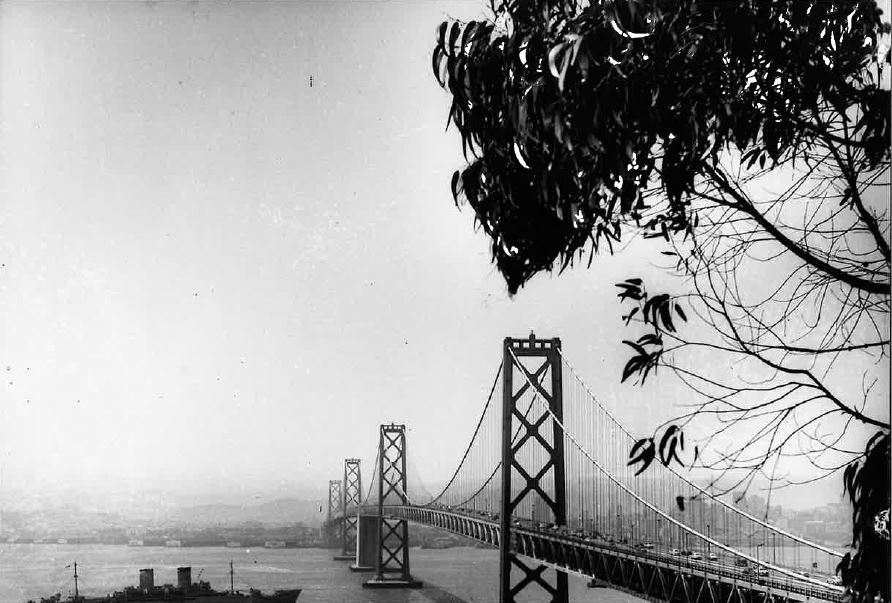
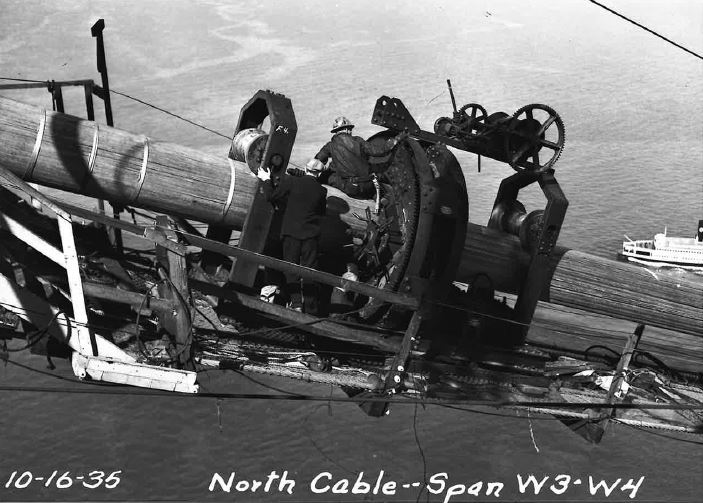
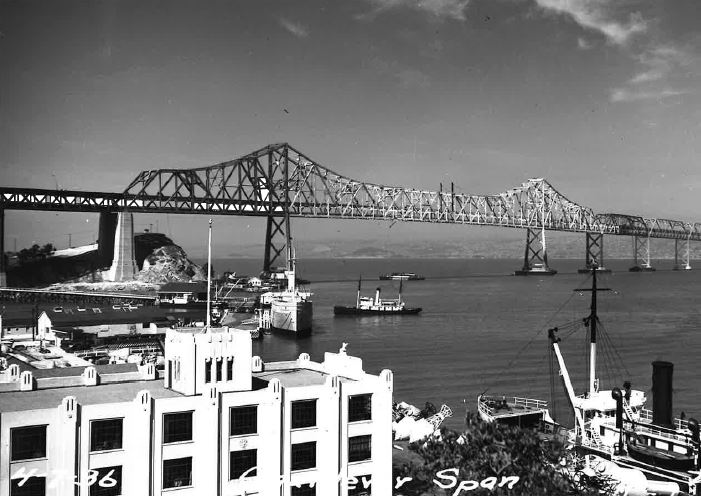
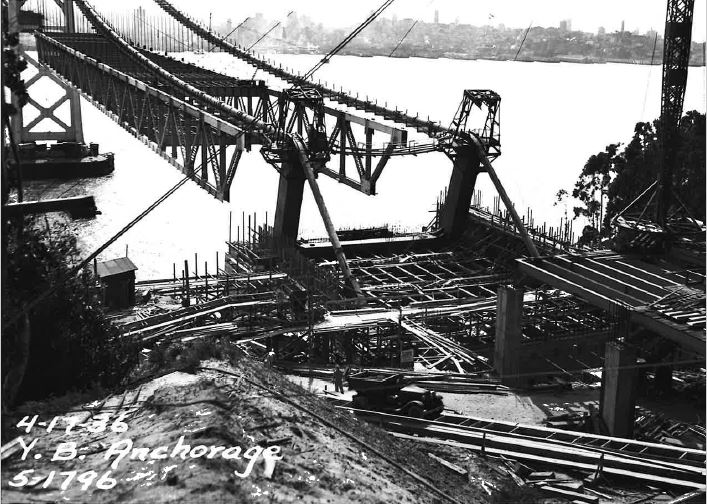

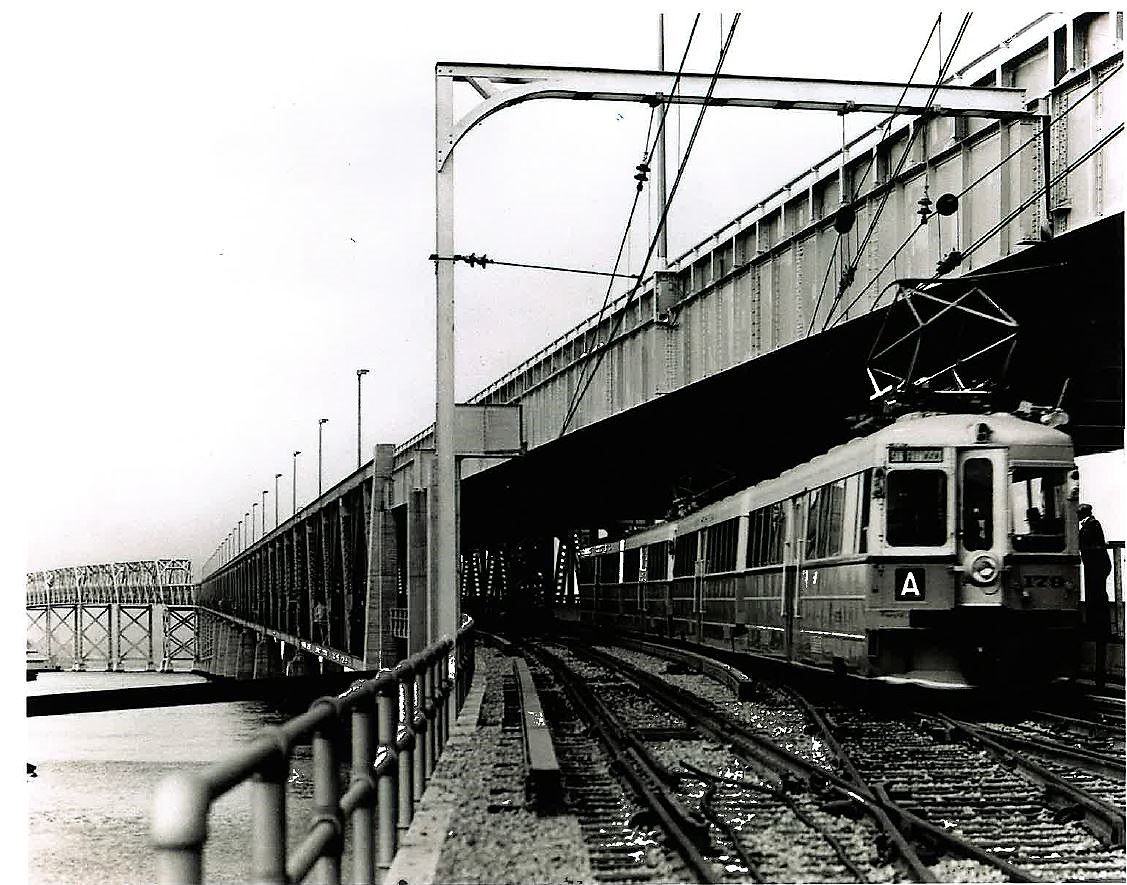
I
n 1936, the San Francisco-Oakland Bay Bridge consisted of an administration building, toll booths, a city terminal, approach ramps and viaducts, grade separations, earth fills, suspension, cantilever and simple bridge spans, and a tunnel. Yerba Buena Island divided the bridge into two nearly equal parts, known as the West Bay Crossing and the East Bay Crossing. The total length of the bridge was 8 ¼ miles. At the time, the bridge had two decks for carrying traffic. The upper deck was 58 feet wide with six lanes for cars and buses. The north side of the lower deck was 31 feet wide and provided three lanes for trucks. The south side carried two standard-gauge open-floor tracks for 70-ton interurban electric cars.
Aside from recent seismic retrofitting and structural upgrades, the West Bay Crossing main span has remained as twin suspension bridges. The center spans are 2,310-feet-long and side spans 1,160-feet-long. The cables of the twin suspension bridge are supported by four steel towers and rest on piers W2, W3, W5, and W6. Towers 2 and 6 are 414 feet high and towers 3 and 5 are 458 feet high.
Field Rivets
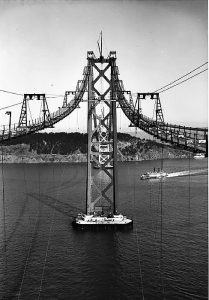
Tons of Steel
The towers were the first major parts of the structure to be erected using a large stiff-leg derrick and two hammerhead derricks. Column sections were delivered vertically to the hammerhead by the stiff-leg derrick. The hammerhead picked up the section, raised it, and the car on the cross arm rotated the section to its final position, lowered it in place, and fastened with bolts and drift-pins.
As soon as the towers and anchorages were built, the footwalks or “catwalks,” were built on each cable. They stretched from anchorage to anchorage and hung just far enough below the curve of the cable so workmen could guide the wires into their correct positions as they were laid by the spinning wheel.
The twin suspension bridges consist of two main cables, 25 ¾ inches in diameter, and 66 feet apart. The cables stretch from anchorage to anchorage, hanging from the tops of the two towers forming a main span of 2,310 feet and two side spans of 1,160 feet. Each cable consists of 17,464 galvanized wires 0.195 inch in diameter. In the main cable there are 38,200,000 pounds of wire, with a total length of 71,000 miles.
There are 1,192 suspender ropes that are 2 ¼ inch, which were hung by being placed in the form of an inverted “U” with the curved parts resting in the grooves of the cable band. Each rope consists of six strands of 19 wires twisted around a wire rope center having seven strands of seven wires. There is 226,000 lineal feet of suspender rope in the entire bridge.
As protection against mechanical injury and corrosion, the cables were wrapped with soft annealed galvanized wire. Two wrapping machines driven by a ten-horsepower electric motor were used wrapping five to six panels in an eight-hour day.
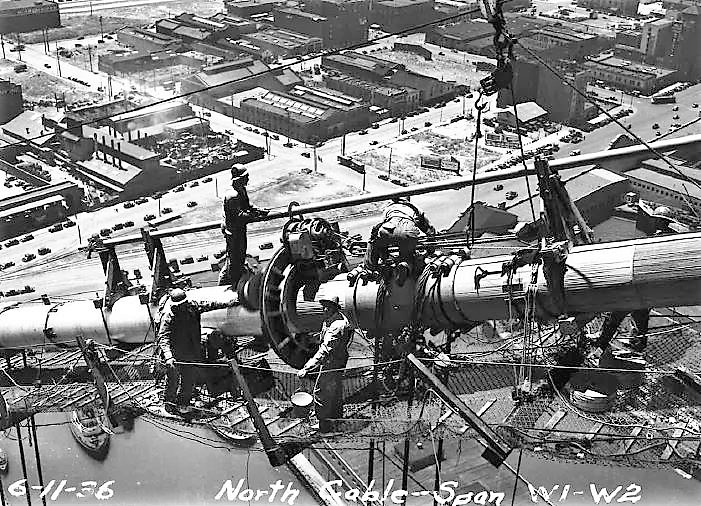
AB engineers’ innovative changes to the spinning process included a hauling rope system driven at both ends of the cable instead of at one end only, double grooved spinning wheels, air-operated tongs to compact individual strands, and lightweight pushing jacks instead of pulling jacks to adjust stand shoes. Each cable was divided into 37 strands of 472 wires. The strands were spun separately and are separately anchored.
The two traffic decks are supported by stiffening trusses, extending the entire length of the bridge. AB engineers devised a new method to erect the trusses. Erection units consisted of two panels of trusses and two lower floorbeams.
Traffic on both upper and lower decks pass through Yerba Buena Island by a 540 feet long tunnel. The cross-section of the tunnel is horseshoe shaped and had a maximum clear width of 65 feet, six inches, and a height of 52 feet, eight inches.
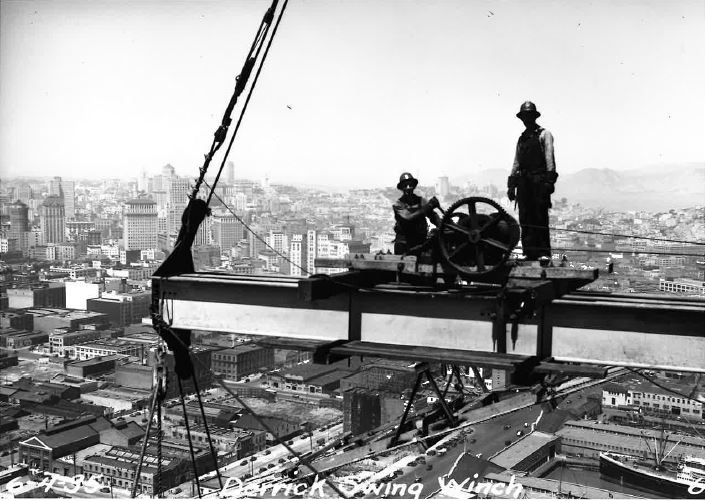
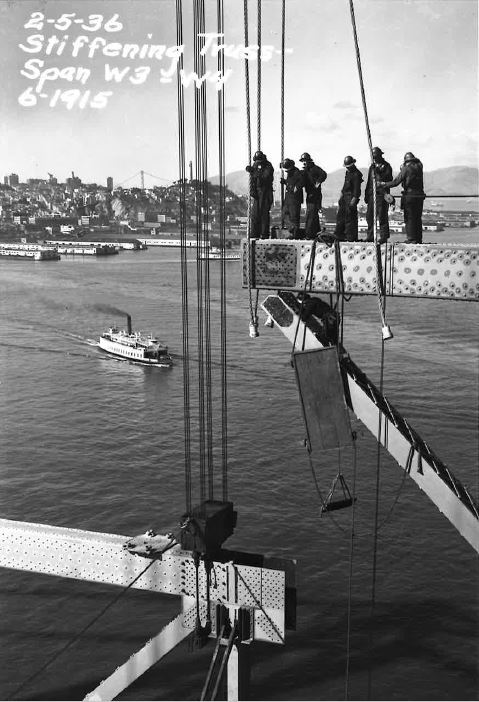
The cantilever bridge was erected from west to east. Members were lifted and set in place by a traveler consisting of two guy derricks mounted side by side on a base that moved along the structure. When the two halves of the suspended span were complete, the pinholes of the eyebar chords at mid-span were ten inches short of matching. The upper chords had a gap of 13 inches.
To bring the lower chords together, the entire east half of the structure was forced ten inches to the west, by jacking between the tops of the double columns at pier E4, the lower chord pins were then driven. The gap between the upper chords was then three inches and was closed by lengthening the upper chord members over the ends of the suspended span, at the same time the diagonal members at mid-span were connected.
Until 2013, the East Bay Crossing consisted of four deck spans supported on steel columns. One span was 272 feet long, and three were 291 feet long. To the east of the four spans was a cantilever structure with a main span of 1400 feet. East of the cantilever structure were five through truss spans, each 509 feet long; a 50-foot braced tower; and 14 deck truss spans, each 291 feet long. East of the truss spans the lower deck was carried to the ground level by ten 41-foot concrete spans, and the upper deck by ten 82-foot steel girder spans.
The pavement of the upper and lower deck roadways consisted of concrete slabs, reinforced with welded steel trusses. Special precautions were taken on the suspension bridges to avoid excess bending or twisting of the towers. Experiments were conducted and to avoid tower distortions, paving operations began in the middle third of the upper deck roadway from pier W1 to pier W4. The remainder of the paving had to be placed in short strips, alternating between the north and south sides of the bridge.
At the time of completion, the San Francisco Oakland Bay Bridge accomplished many feats. The bridge crossed the longest stretch of major navigable water, was nearly three times as long as the Firth of Forth Bridge in Scotland, involved the deepest foundations undertaken, longest and heaviest cantilever span in the U.S., and included the only twin suspension bridges ever built.
- Posted In:
- News

